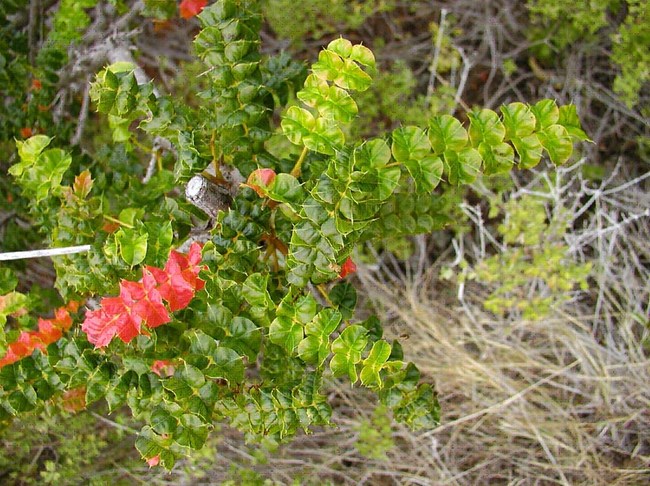
Sean Corsaut The vegetative appearance of Buck Island has changed drastically over the past 250 years. The subtropical deciduous dry hardwood forests that used to cover Buck Island and St. Croix were largely cut down beginning in the 1760’s. Iron wood (Lignum vitae) and other tropical hardwoods were valuable woods for export. Non-native plants, like tan-tan, tamarind, and coconut palms, soon took hold. Some non-native plants, like sweet potato, pineapple, and wild cotton, were introduced by ancient Amerindian settlers nearly 2,000 years ago. Invasive Non-Native Plants Invasive non-native plant species displace native plant species, alter species proportions, alter nutrient and fire patterns, modify geomorphology, hydrology, and biogeochemistry, and reduce recreational use of resources. Nineteen out of the 228 plant species identified on Buck Island Reef are not native. Six invasive nonnative species are of immediate concern: • Guinea grass (Urochloa maxima) • Tan-tan, wild tamarind (Leucaena leucocephala) • Cedar or ginger • Wild pineapple, penguin (Bromelia penguin) • Boerhavia (Boerhavia erecta) • Aloe (Aloe vera) Three species of exotics present and known to exhibit invasive characteristics in the region are: • Genip (Melicoccus bijugatus) • Haiti-haiti or seaside maho (Thespesia populnea) • Painkiller or noni (Morinda citrifolia)

NPS photo. Dangerous VegetationBe aware of the poisonous manchineel tree (Hippomane mancinella). Manchineel has yellow-green leaves that have a distinct mid-vein and slightly serrated edges. The leaves, sap, and the fruit that looks like small green apples are very poisonous. Any contact with manchineel trees (sap, leaves, bark, and fruit) can cause chemical burning. 
NPS photo. Other plants, such as prickly pear cactus (Opuntia rubesncens) and casha (Acacia toruosa), have irritating hairs or sharp thorns that may cause skin irritation, rashes, pain, and skin punctures. Stay on hiking trails and be aware of your surroundings. |
Last updated: November 5, 2020
